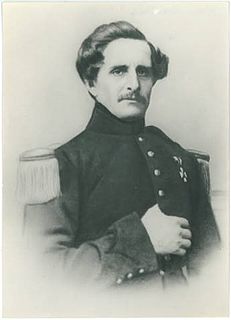
The Hague is a city on the western coast of the Netherlands and the capital of the province of South Holland. It is also the seat of government of the Netherlands.

The Leidsevaart is a canal between the cities of Haarlem and Leiden in the Netherlands. It was dug in 1657, making it one of the oldest canals in the Netherlands. It was the major means of transport between Leiden and Haarlem for almost two centuries until the rail connection was established in the 19th century. The original stops along the railway mirrored the toll bridges of the canal.

Mathilda (Til) Brugman was a Dutch author, poet and linguist.

Loosduinen is a former village in the Netherlands that was a municipality unto itself until 1923, when it was annexed by The Hague and subsequently became a district of the city.

The Diocese of Rotterdam is a Latin diocese of the Catholic Church in South Holland province of the Netherlands. The diocese is a suffragan in the ecclesiastical province of the Metropolitan Archbishop of Utrecht. Since 2011, the bishop has been Hans van den Hende.

Michaël Henricus Gertrudis (Michiel) van Kempen is a Dutch writer, art historian and literary critic. He has written novels, short stories, essays, travel literature and scenarios. He was the compiler of a huge range of anthologies of Dutch-Caribbean literature and wrote an extensive history of the literature of Suriname, in two volumes.
Femme Simon Gaastra was a Dutch Professor of maritime history at the University of Leiden and a leading expert on the history of the Dutch East India Company.

The Nationaal Archief (NA) is the national archive of the Netherlands, located in The Hague. It houses collections for the central government, the province of Zuid-Holland, and the former County of Holland. There is also material from private institutions and individuals with an association to the Dutch government or the political or social history of the Netherlands. The Nationaal Archief holds the Archives of the Dutch East India Company from 1602–1811, which were, along with related records held by South Africa, India, Sri Lanka, and Indonesia, inscribed on UNESCO's Memory of the World Programme Register in 2003 in recognition of their historical value. Recently, the photographic archives of Spaarnestad Photo were included in the Nationaal Archief. It has been announced that Wikipedia will get user rights over a large number of photos from these archives.

Maria Francisca Bia called Mimi, (1809–1889) was a Dutch ballet dancer, opera singer and dramatic stage actress.

Wilhelmina Drucker was a Dutch politician and writer. One of the first Dutch feminists, she was also known under her pseudonyms Gipsy, Gitano, and E. Prezcier.
Jacobus Ruurd "Jaap" Bruijn, is one of the best known and respected Dutch maritime historians. He was professor of maritime history at the University of Leiden from 1979 until his retirement in 2003. During his 41-year teaching career as The Netherlands' only university professor of maritime history, he guided the doctoral theses of no fewer than 43 graduate students.

Adriaan Kluit was a Dutch scholar, important in Dutch linguistics. He was rector of the Latin school in Alkmaar and Middelburg. In 1779 he became the professor of history at the University of Leiden, remaining there until his death.
Willem Maria (Wim) van den Goorbergh is a Dutch economist and banker. He was Chief Executives Officer of the Executive board of the Rabobank until 2002.

Museum Het Leids Wevershuis consists of one of the last remaining "weavers' homes" (1560) in Leiden, Netherlands. The exterior, the large antique loom (1830) and the interior, are testimony of the once flourishing textile industry around Leiden, in particular during the 16th and 17th century, when many home weavers supplied the draper's guild with high quality woolen cloth.

Joost Berman was a Dutch lawyer, judge, politician, poet, nonfiction writer, and editor.
Pieter Lodewijk Muller was a Dutch historian. He published numerous works of history and also contributed nearly two hundred entries to the German Allgemeine Deutsche Biographie .
Jacob Cornelis van Slee (1841–1929) was a Dutch Reformed clergyman and scholar. He was the author of a study of the Windesheim Congregation, De kloostervereeniging van Windesheim, and between 1875 and 1900 contributed articles on theologians to the Allgemeine Deutsche Biographie.
Van Maanen is the name of a Dutch patrician family, originating in the Duchy of Guelders. The family takes its name from the town of Manen, situated south of the city of Ede in the province of Gelderland.

Johan Hendrik Christiaan Basting was a Dutch army surgeon and friend of Red Cross founder Henri Dunant. He played an important role during the establishment in 1863 of the International Committee of the Red Cross (ICRC), and from that year on he was an advocate for the establishment of a national voluntary aid organization in the Netherlands, the Netherlands Red Cross established in 1867.
























